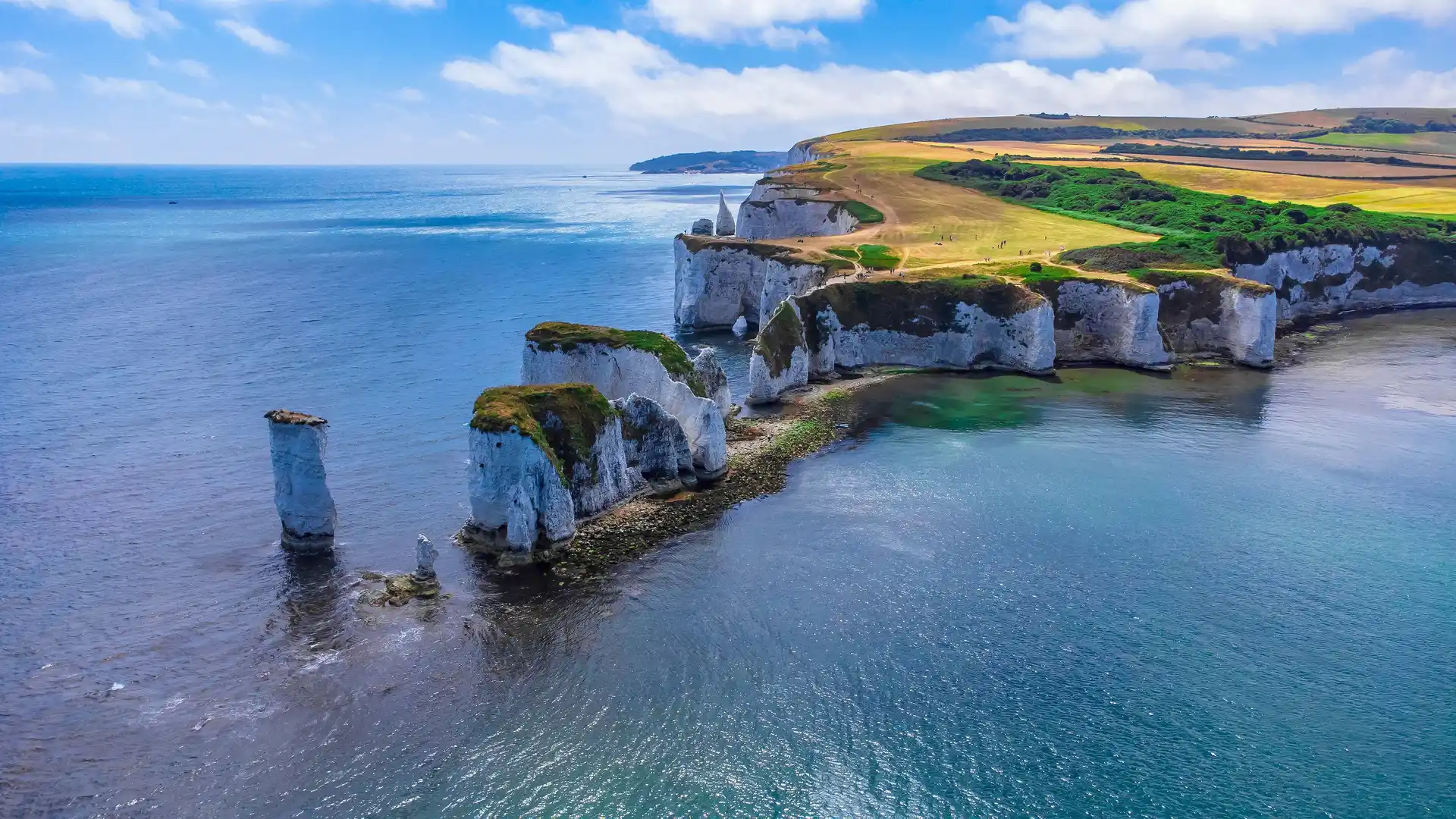Walking Holidays & Outdoor Adventures on the Jurassic Coast UNESCO World Heritage Site
A World Heritage coastline of cliffs, fossils, and ancient seas
The Jurassic Coast is one of England’s most extraordinary landscapes to explore on foot — a UNESCO World Heritage Site recognised for its globally significant geology and uninterrupted record of 185 million years of Earth’s history. Stretching for 95 miles along the south coast of England, from Exmouth in East Devon to Studland Bay in Dorset, the Jurassic Coast combines dramatic cliffs, fossil-rich beaches, hidden coves, and far-reaching sea views into one of Europe’s most distinctive coastal walking environments.
For those planning walking holidays, the Jurassic Coast offers continuous access via the South West Coast Path, with clifftop routes, coastal descents, and village-to-village sections linking places such as Lyme Regis, Charmouth, West Bay, Lulworth Cove, Swanage, and Studland. These same coastal corridors also support relaxed cycling holidays, particularly where inland lanes and valleys run parallel to the coast. Beyond walking and cycling, the area lends itself naturally to wider outdoor adventures, including kayaking beneath limestone cliffs, paddleboarding in sheltered bays, and fossil hunting along ever-changing shorelines. With a wide range of independent places to stay along the route, the Jurassic Coast is well suited to both linear journeys and slower, base-led exploration.
About the Jurassic Coast
Inscribed as a UNESCO World Heritage Site in 2001, the Jurassic Coast is internationally recognised for its geological value. Unlike cultural landscapes shaped primarily by human activity, this coastline tells a natural story — one revealed through erosion, landslips, and exposed rock layers that chart the evolution of life from the Triassic through to the Cretaceous periods.
The coast’s iconic formations — including Durdle Door, Lulworth Cove, Old Harry Rocks, Golden Cap, and the fossil beaches of Lyme Regis and Charmouth — are not static landmarks but part of a constantly changing environment. Walking here offers an ever-evolving experience, where storms reshape beaches, cliffs reveal new fossils, and the relationship between land and sea is always in motion.
Trails & Routes Along the Jurassic Coast
South West Coast Path (Jurassic Coast Section)
A continuous clifftop route following the full length of the UNESCO site, linking Devon and Dorset through dramatic coastal scenery.
Lyme Regis to Charmouth
A classic coastal walk passing fossil-rich beaches, low cliffs, and accessible shoreline sections.
Lulworth Cove to Durdle Door
A short but iconic walk connecting two of the Jurassic Coast’s most famous geological features.
West Bay to Burton Bradstock
Clifftop walking above golden sandstone cliffs and expansive beaches.
Studland Bay & Old Harry Rocks
Gentler coastal paths with chalk stacks, heathland, and sweeping views across Poole Bay.
Adventure Highlights
- Walk through a UNESCO-listed coastline shaped by deep geological time
- Dramatic clifftop routes via the South West Coast Path
- Fossil-rich beaches and globally important geological sites
- Kayaking and paddleboarding beneath limestone and chalk cliffs
- Quiet inland lanes ideal for scenic cycling
- Coastal villages, harbours, and historic seaside towns
- Strong public transport links enabling car-free walking sections
Outdoor Adventures
The Jurassic Coast is a natural playground for self-guided outdoor exploration. Days can be spent tackling exposed clifftop walks, following gentler shoreline routes, or combining coastal paths with inland cycling loops through Dorset and Devon countryside. Calm bays support paddleboarding and kayaking, while fossil hunting remains a uniquely immersive way to engage with the landscape. Whether moving slowly along a single stretch or covering multiple sections over several days, the coast offers constant variety within a clearly defined route.
Explore the Area
- Lyme Regis – Historic seaside town and gateway to fossil beaches
- Charmouth – World-famous for fossil hunting and coastal walking
- West Bay – Harbour town beneath dramatic sandstone cliffs
- Lulworth Cove – Circular coastal walks and geological landmarks
- Swanage – Traditional resort with rail and coastal path access
- Studland – Beaches, heathland, and chalk headlands

